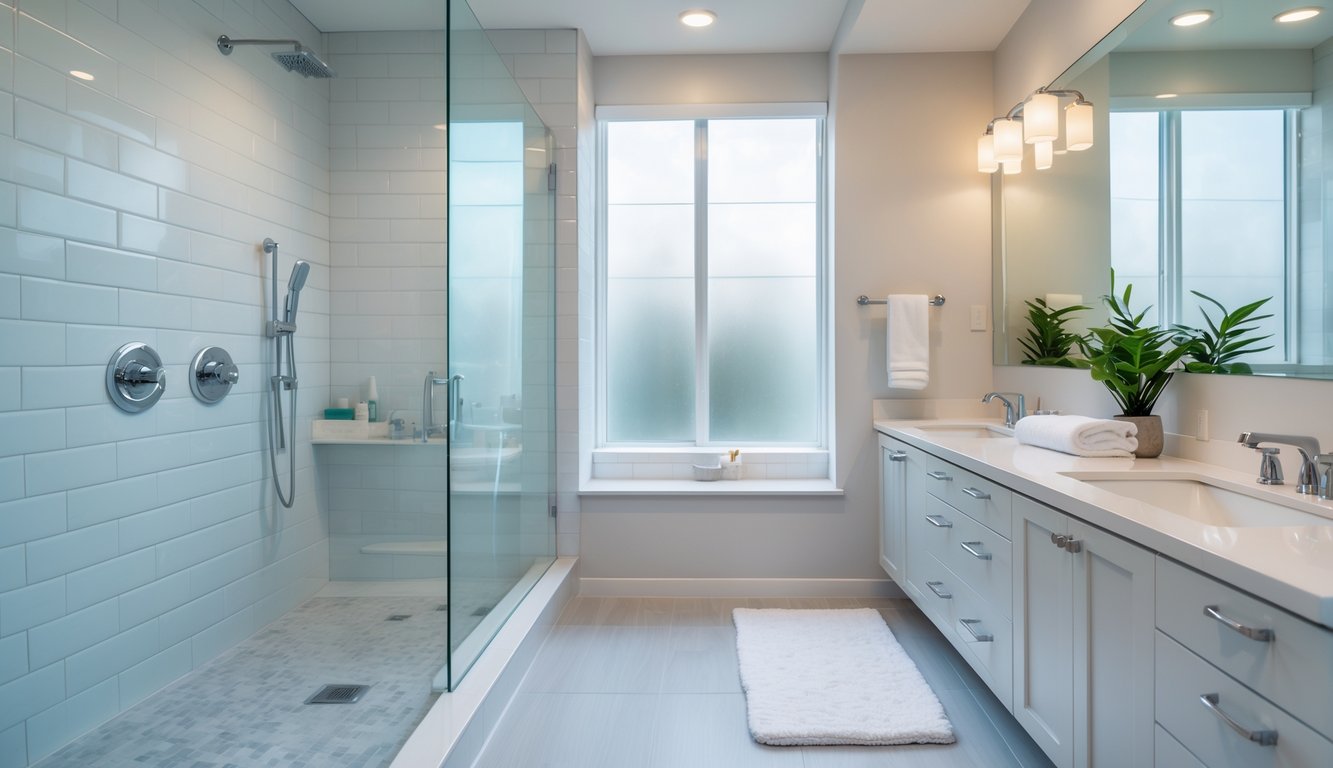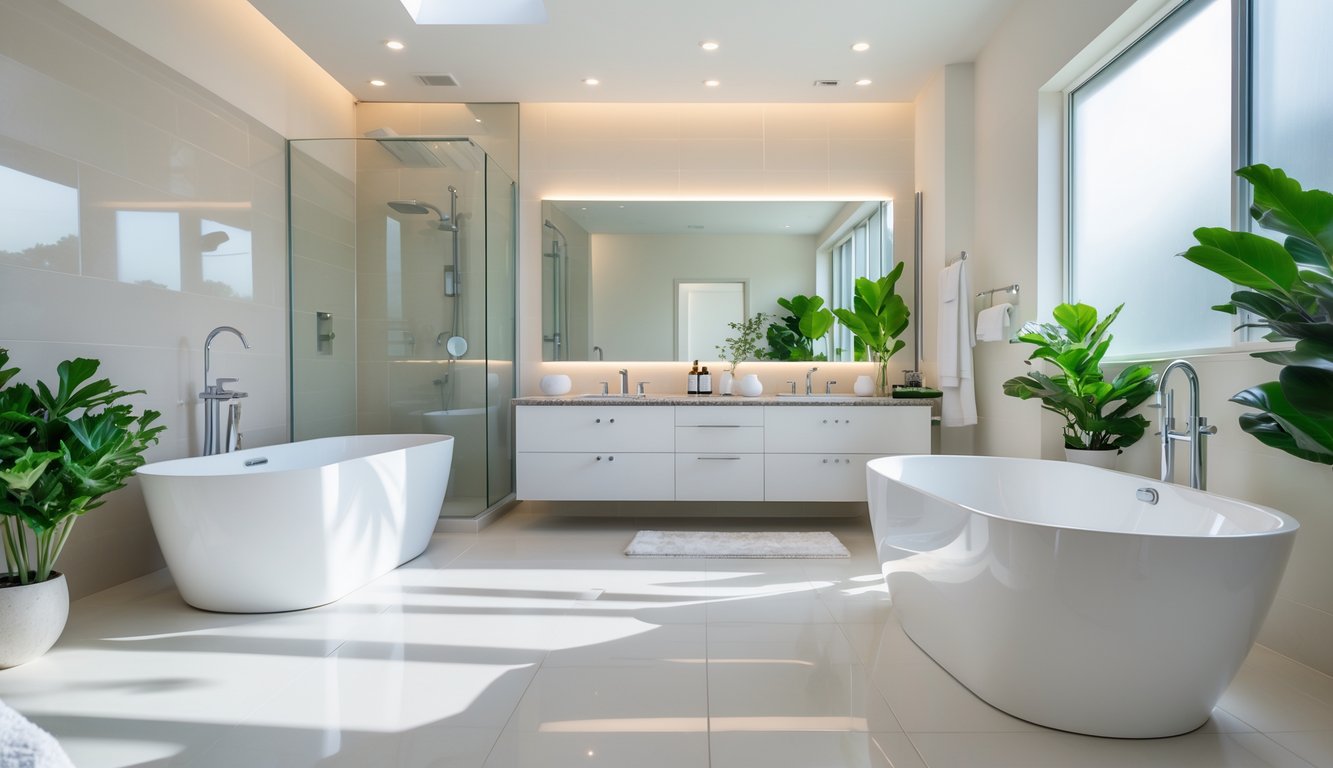
Elbow-deep in caulk gunk again—seriously, why do I keep doing this? Another Saturday, another Home Depot run, and honestly, I don’t think subway tiles have ever made me richer or happier. You know what actually nudges those offers up? Boring stuff: swapping out the fan, fixing the lighting, maybe a steam shower, or just paint that doesn’t look like a toddler helped. Buyers act like they want spa tubs, but it’s the clean lines and fresh air that get them. It’s wild—everyone’s obsessed with that “new home” smell, but giant bathtubs? Nobody cares. I read McKenzie Ryan’s take (Douglas Elliman, big deal apparently) and yeah, bathrooms, even tiny ones, somehow become the deciding factor in negotiations. Quietly, every article on top-value bathroom remodels says the same thing but less grumpy.
Doors that never shut, mirrors with toothpaste fossils, outlets that spark if you dare plug in two things—how does this stuff drop your home’s value faster than a pink toilet? I wasted hours on a fancy vanity, and all buyers saw was the lumpy grout and no storage. “Remodel,” they said, like it was a joke. I guess they were right—every open house, same complaints, same eye rolls. Bathroom updates that attract buyers basically scream the same advice.
And yet, sellers keep chasing gold faucets and jacuzzi dreams. Meanwhile, smart toilets and basic fixes apparently get you more money. Forbes says luxury bathroom upgrades only get you back about 56% of what you spent, but well-planned bathroom renovations actually make sense. I’m just saying, practicality pays. Why is this so hard for people to see?
Understanding the Value of Bathroom Updates
I bounce between grout dust and spreadsheets, and honestly, the real estate market feels like it runs on caffeine and chaos. Bad bathroom lighting? Watch buyers run. The numbers? They’re all over the place, but bathroom renos live in this weird zone between feelings and ROI math. Glossy finishes don’t always mean higher offers, but a dated bathroom? That’ll quietly kill your price.
Why Bathrooms Influence Home Offers
I walk open houses and watch buyers avoid powder rooms like they’re haunted. Old linoleum? Instant “nope.” A bathroom that looks modern and works well isn’t just “nice”—it’s a weird psychological test. Sometimes I think bathrooms matter more than kitchens. A crusty showerhead or cracked vanity? People start imagining leaks and mold. I saw a broker say, “Nothing says don’t pay top dollar like a pink tile toilet suite,” and wow, they’re not wrong. You can paint the living room all you want, but if the bathroom’s gross, buyers will make you pay. There’s actual research showing updated bathrooms make people bid more, so I guess it’s not just me being picky. Resale value jumps when bathrooms get a refresh, even if it doesn’t make logical sense.
Calculating ROI for Bathroom Renovation
Don’t get sucked in by Pinterest. The stuff that pays off is boring: new taps, water-saving toilets, anti-fog mirrors, walk-in showers. One study I found (wish I’d saved the link) said mid-range upgrades get you back like 60–70%, but only after you eat the costs nobody talks about—permits, labor, “surprise” plumbing.
Don’t believe the myth that every dollar you spend comes back to you. Not even close. Focus on what people actually see: ugly floors, bad lights, ancient tile. If I got paid for every buyer who commented on grout, I’d have paid for my own reno. All the big agencies and my own disasters agree: you get the best ROI from stuff that looks and works new, not shiny gold nonsense.
Key Trends in the Real Estate Market
Trends are exhausting. One week nobody cares about rainfall showers, next week it’s the only thing buyers ask about. Matte black fixtures? Suddenly everywhere. Energy efficiency isn’t a bonus anymore—it’s expected. People rip out tubs for bigger showers. Is that smart? I don’t know, but it’s happening.
I always tell clients: only buy the tech toilet if your neighborhood is into that. Market data says homes move faster and for more money when the updates match what buyers want, not designer daydreams. Some Australian survey said modern bathrooms are the third biggest reason for quick sales, right after location and kitchens. Stuff that used to be “extra”—walk-in showers, floating vanities, water-saving toilets—is now just standard. Ignore it, and you’ll end up slashing your price or dealing with flippers.
Planning a Bathroom Remodel for Maximum Impact

Everyone rushes into bathroom makeovers, blows the budget, then pretends utilities don’t exist. I do it too. If I forget the real numbers (hey, 70% ROI is just an average, not a promise), I get burned. Vendors swear style sells, but last time I skipped lighting, the house sat for weeks. Coincidence? I doubt it.
Setting a Realistic Budget
Who doesn’t want to rip out every ugly fixture and splurge on heated floors and fancy tile? Then you get the quote and, yeah, reality check. Minor remodels run about $8,500, big ones can hit $21,000 or way more, according to this 2025 cost breakdown.
But it’s the stuff you forget that hurts. Moving plumbing, code updates, or realizing your toilet’s older than you are. I have to list every cost—labor, materials, fixtures, and the “oh crap” fund. I try not to overspend, since experts say you’ll get back 70–73% if you’re lucky, not the “double your money” fantasy TV shows sell.
Vendor deals and off-season discounts? Those matter way more than choosing between nickel and chrome. Forgetting to plan for a backup bathroom? Bad idea. I had one client shower at the gym for six weeks. Never again.
Balancing Style and Function
Here’s what I’ve learned: make a bathroom look like a magazine cover and you risk scaring off normal people. I always tell friends, use materials people recognize—porcelain, real stone, tile that doesn’t chip if you drop a hairdryer. Function wins. Storage that makes sense, finishes that clean up fast, tubs you can actually use.
Vessel sinks? People just ask, “How do I even use this?” Universal design is my go-to—lever handles, curbless showers—so buyers see themselves living there now and later. Even LED lighting and anti-fog mirrors—cheap, but buyers love them. Nobody ever says, “Wow, nice grout!” so I use big tiles and less grout. “Balanced” doesn’t mean boring, it means obvious and useful.
I had a client once who wanted rainforest green granite. Looked amazing, but every buyer said it clashed with their towels. There’s a reason everyone talks about neutrals.